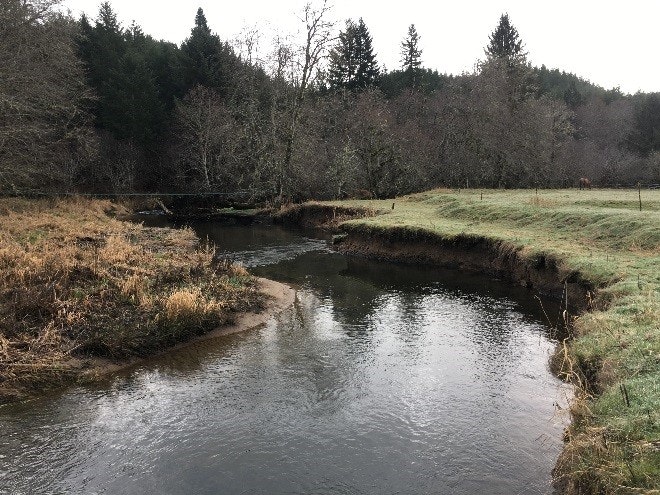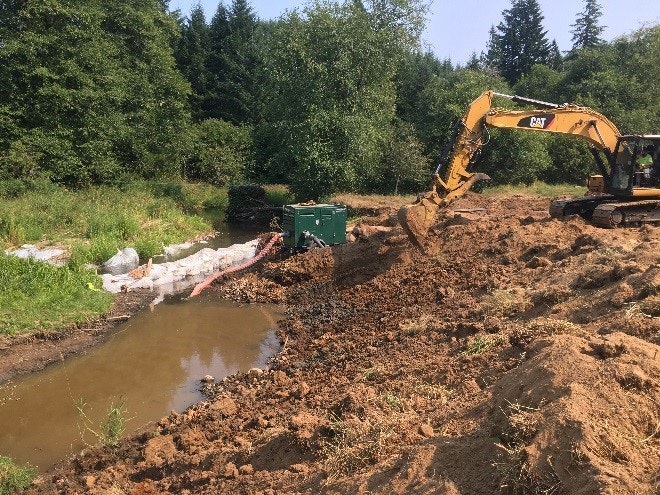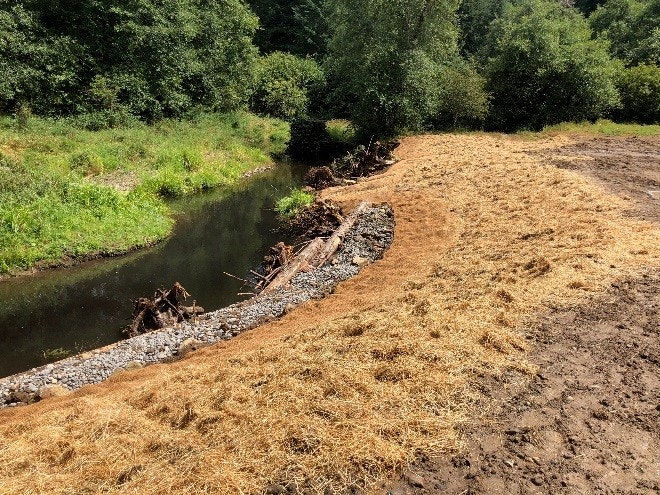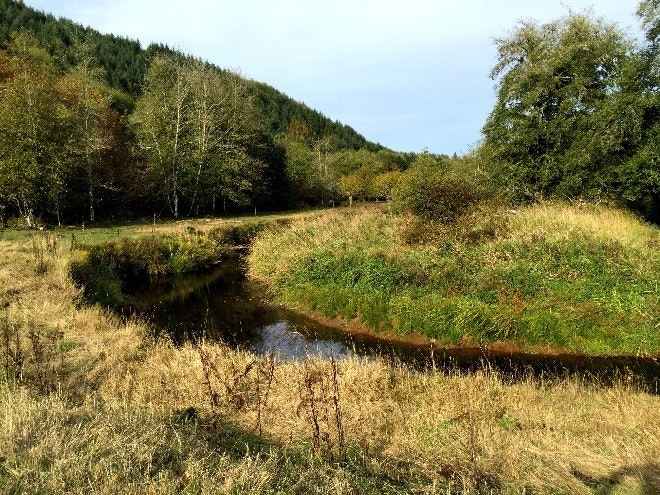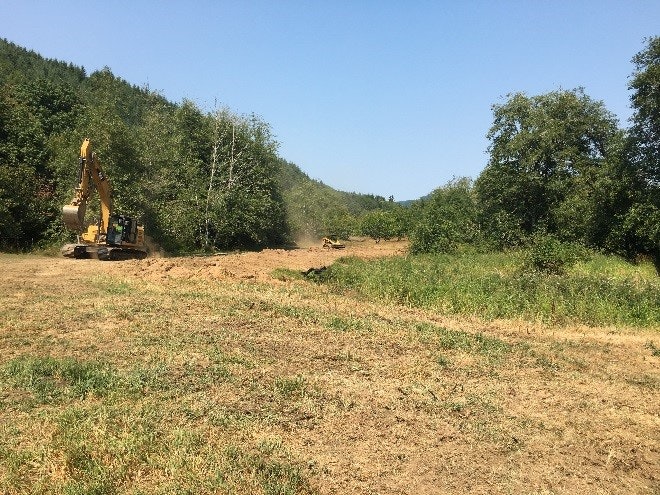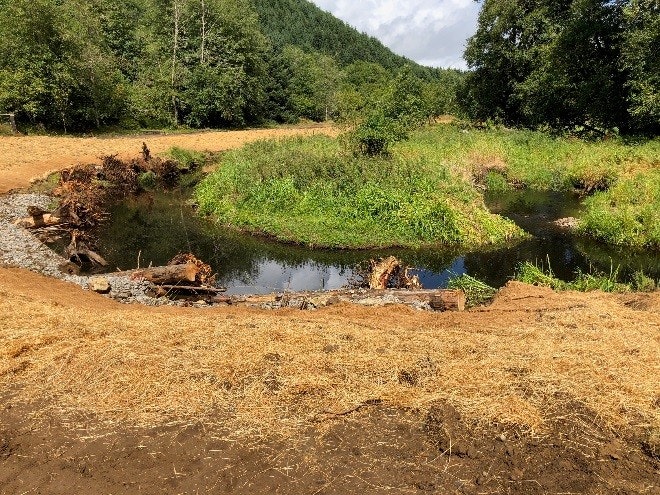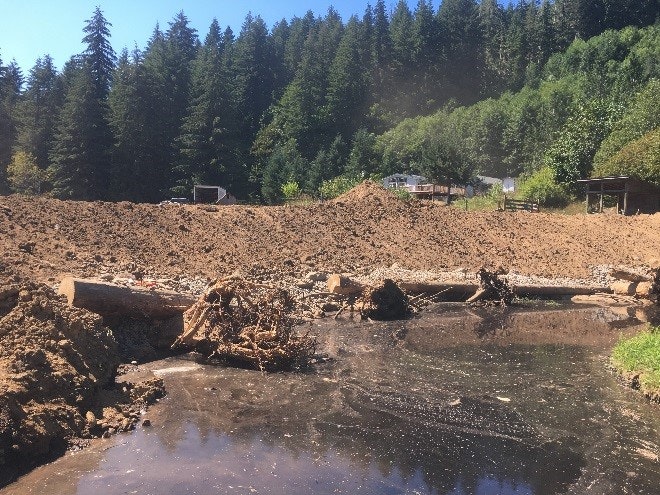Fishhawk Creek Riparian Restoration Project
The Fishhawk Creek Riparian Restoration Project aimed to address severe streambank erosion and habitat degradation on a section of Fishhawk Creek. The area, previously impacted by livestock grazing and the disposal of dredge spoils, lacked native vegetation, leading to destabilized banks and poor aquatic habitat. The project, initiated in 2016 through the Oregon Department of Agriculture's Strategic Implementation Area (SIA) program, involved sloping the banks, installing large wood structures, planting native vegetation, and excluding livestock to restore the riparian corridor.
Location: The project is on Fishhawk Creek, a tributary of the Nehalem River. The site is near the Fishhawk Lake community in Columbia County, OR.
Partners: The Oregon Watershed Enhancement Board (OWEB), Oregon Department of Agriculture (ODA), and Private Landowners
Funding: The Oregon Watershed Enhancement Board (OWEB)
Awarded Amount: $117,080.00
Project Timeframe: July 2017 - September 2021
Background:
Before restoration, the project area suffered from exposed, eroding banks due to a lack of root structure and continuous livestock grazing. This condition led to significant bank instability and sedimentation in the creek, negatively affecting water quality and fish habitat. ODA identified this issue as a compliance concern in 2016, prompting the landowners to seek an ecosystem-based solution.
Work Done:
- Bank Sloping: In August 2018, 435 feet of streambank were reshaped to a 1:3 slope to reduce erosion and improve bank stability.
- Large Wood Structures: Four large wood structures, consisting of 25 pieces of wood, were installed along 350 feet of the streambank to enhance in-stream habitat complexity and stability.
- Riparian Planting: In the fall of 2018, 2,535 native plants were installed along the restored bank. Additional planting and maintenance were conducted in 2020.
- Fencing: Approximately 750 feet of fencing was installed to exclude livestock from the riparian area, preventing further degradation.
In Summary:
The project successfully re-established a healthy riparian corridor, improved water quality, and enhanced habitat for salmonid species by increasing large wood volume and shade along the creek. These improvements align with the Strategic Action Planning (SAP) process, which prioritizes restoration efforts in the Fishhawk Creek watershed.
This restoration project serves as a model for addressing similar issues in degraded stream systems, demonstrating the importance of combining habitat restoration with land management changes to achieve long-term ecological benefits.
